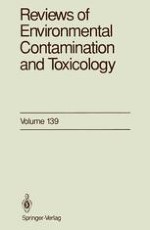1994 | OriginalPaper | Chapter
Monocrotophos — Environmental Fate and Toxicity
Author : Johann A. Guth
Published in: Reviews of Environmental Contamination and Toxicology
Publisher: Springer New York
Included in: Professional Book Archive
Activate our intelligent search to find suitable subject content or patents.
Select sections of text to find matching patents with Artificial Intelligence. powered by
Select sections of text to find additional relevant content using AI-assisted search. powered by
Monocrotophos (C1414, SD 9129), the active ingredient (a.i.) of Nuvacron® (trademark of Ciba-Geigy) and of Azodrin® (trademark of Shell), is a broad spectrum organophosphorus insecticide with systemic, residual, and contact activity against a wide range of sucking and chewing insects and mites. It is registered for more than 20 crops in over 50 countries and is extremely well tolerated in all crops for which its use is recommended. Cotton is the most important crop, followed by soybeans and rice. In addition, monocrotophos is also used in wheat, potatoes, groundnuts, maize, sugarcane, tobacco, and some vegetables. Application rates for the different uses vary and range from 150 to 1200 g ha-1. The purpose of this chapter is to summarize research information regarding the environmental fate and toxicity of monocrotophos. The published scientific literature forms the primary source, but results from proprietary, industrial research reports are also included.
